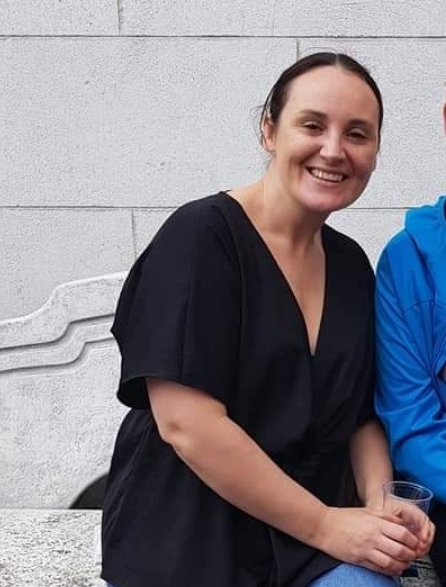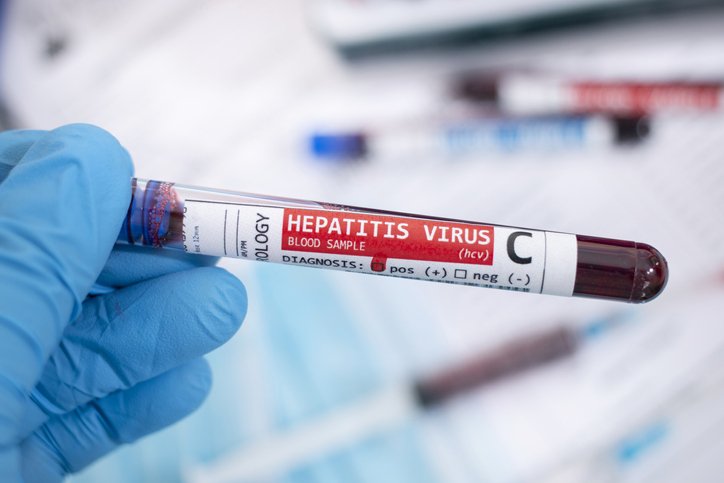Amid a considerable decline in people accessing hepatitis C treatment in 2020, clinicians and community workers warn
that more needs to be done to identify those requiring care, who often live on the margins of society. Catherine Reilly reports
The numbers of people who commenced curative direct-acting antiviral (DAA) treatment for hepatitis C virus (HCV) dropped sharply to 532 last year, compared to 1,196 in 2019. A spokesperson for the HSE National Hepatitis C Treatment Programme (NHCTP) told the Medical Independent (MI) that treatment numbers had been affected by the Covid-19 pandemic.
“This is mainly due to the disruption of primary care and the reduction in outpatient numbers in hospital. However, the NHCTP has remained open since the start of the Covid-19 pandemic and new patients continued to be assessed and treated. There were some delays in receiving PCR and genotyping results in the early period of the pandemic, but these have been resolved and treatment numbers are now increasing.”
The NHCTP informed MI the target for 2021 “is to seek and treat as many as possible”.
Revolutionary
In the storybook of medical breakthroughs, the advent of DAAs describes a revolutionary step forward for treatment of HCV. The oral therapies, licensed in Europe since 2014, are well-tolerated and highly effective against all HCV genotypes. The treatment course is eight-to-12 weeks, sometimes extending to 24 weeks, and over 95 per cent of patients achieve a sustained virologic response. However, many healthcare systems have been slow to re-imagine testing, treatment and support strategies for HCV, which is mainly transmitted by injecting drug-use.
People with HCV may be distrustful of hospitals due to negative experiences. Many are homeless and struggle to attend, or are not aware of, appointments. The old interferon-based treatment regimens, which were associated with a range of difficult side-effects and were less efficacious than DAAs, still influence attitudes towards testing and treatment. Barriers to care are compounded by the fact that chronic liver disease develops over a long period. Signs and symptoms may not be evident for 20-to-30 years, until serious damage has occurred.
Ireland has committed to the World Health Organisation (WHO)’s 2030 HCV global elimination targets, set out in 2016.
Elimination is defined as a 90 per cent reduction in new chronic infections and a 65 per cent reduction in mortality, compared with the 2015 baseline. It would require diagnosis of 90 per cent of those infected and treatment of 80 per cent of those diagnosed. Underdiagnosis is recognised as a major challenge to achieving elimination.
A modelling paper published in Liver International in January reported progress made in the timing of HCV elimination in 45 high-income countries between 2017 and 2019. The study, led by the Centre for Disease Analysis and funded by AbbVie, projected that only 11 of the countries studied would meet the HCV elimination targets by 2030. It estimated Ireland’s ‘year of elimination’ as 2037.
In 2020 the NHCTP, which is clinically led by Consultant Hepatologist Prof Aiden McCormick, described Ireland as on course to achieve the WHO 2030 goals. Since the programme was established in 2015, some 5,940 people have received DAA treatment, which is free of charge. From 2015, a substantial annual budget for drug costs has been provided to the NHCTP (initially the NHCTP budget was €30 million per annum; currently €25 million). However, there has been criticism of the lack of resourcing for implementation of national screening guidance, published by the national clinical effectiveness committee and National Patient Safety Office in 2017, and for initiatives to enhance access to care at scale.
The NHCTP budget “is primarily utilised on drug spending”, according to the HSE. The majority of HCV drugs are still on patent. The HSE “engages in formal tender processes for its multi supplier contract for direct-acting antiviral medicines” thereby “ensuring value for money”. With regard to testing, the NHCTP said it currently funds a number of testing programmes including the community prescribing project, community outreach and the extension of seek and treat initiatives in partnership with voluntary providers.
In 2019 the NHCTP published community treatment guidelines for GPs and community pharmacists. Currently, it restricts community-based treatment to low-risk patients. Those patients with cirrhosis, organ transplantation, HIV and recurrent HCV infection, should be referred to a hospital treatment centre. It is expected that these criteria may change over time, according to the guidance. It also states that in order to participate in the HCV community treatment programme, GPs must be registered to prescribe methadone.
The NHCTP has previously acknowledged that the process of establishing community-based treatment programmes had been slow. It remains at a small scale, representing 15 per cent of treatment provision.
Untreated
There are different estimates of how many people with chronic HCV infection are untreated. A written Dáil response last September by Minister for Health Stephen Donnelly stated that true prevalence of HCV in Ireland was not known.
A study published in Eurosurveillance in 2017 (Garvey et al) estimated 33,708 people in the adult population in Ireland have had previous exposure to HCV, and 19,606 had a chronic infection. The researchers examined samples collected between 2014 and 2016, which were held at the National Virus Reference Laboratory.
While treatment continues, hundreds of new infections are reported to the Health Protection Surveillance Centre every year. Some 3,663 HCV infections were notified from 2014 to 2019 inclusive, although numbers have been declining annually. The NHCTP is currently engaged in a formal epidemiological study to “determine HCV prevalence and to facilitate informed decisions regarding screening”. This study has received ethical approval and sample collection has been completed in St Vincent’s University Hospital, Dublin. The study is currently awaiting ethical approval in a number of hospitals throughout the country, with the aim of getting a “robust national prevalence figure” for the birth cohort 1965-1985.
Recently, HIQA published a draft health technology assessment (HTA) of offering once-off HCV testing to people in Ireland born between 1965 and 1985. The draft report is currently available for public consultation until 27 April.
The final report will be subject to approval by the board of HIQA. It will then be provided as advice to the Minister for Health to inform a decision on whether to provide birth cohort testing for HCV in Ireland.
Marginalised
Dublin GP Dr Austin O’Carroll, who has worked extensively with marginalised communities, said there is still “a reservoir of people who are not being identified” although he believes this has lessened. These are people not engaged in services, and they are more likely to spread the virus, said Dr O’Carroll. Therefore, it is important to “get on top of” this situation. In Dr O’Carroll’s experience, community-based care has worked very well. In the early days of DAA treatment, he participated in a shared care programme with the Mater Misericordiae University Hospital, Dublin, as hospital-centric care had not worked for many people.

Prior to this development, he said his practice referred 40 people to hospital with just two completing the process.
“That was very early on, when it was only in hospital. We got a shared care programme with the hospital and we got all 40 treated. If we can get people treated by their GP, we will have a much better success rate,” he told MI.
HCV-infected patients have continued to present to healthcare in the late stages of liver disease, according to Prof Jack Lambert, Consultant in Infectious Diseases at the Mater.
“We still say there is a significant burden of people [with HCV] out in the community with advanced liver disease,” Prof Lambert told this newspaper. “I’d probably say 10-to-20 per cent of the patients we are seeing have advanced liver disease and the idea is to treat people before they get advanced liver disease.”
People whose lives are “more chaotic” have not been identified in time and deteriorated into cirrhosis and hepatocellular carcinoma. “We are still seeing the complications of untreated hepatitis C in Ireland, and it has been made worse by the Covid lockdown and loss of the services that these people needed.”
He said the Mater has “opportunistically” treated HCV positive patients following their presentation to hospital for other reasons during the pandemic. During 2020, numbers of people in receipt of methadone and Suboxone have increased – access to opioid substitution therapy (OST) being an important component of HCV prevention. However, Dr Lambert noted that some people cured of HCV, and who were on methadone maintenance, had started injecting again after changes in delivery of their programmes during restrictions. This had led to some reinfections, according to the consultant.
Currently, a peer support worker at the Mater assists people to access care and complete their treatment (one of the interventions tested in HepCare Europe, a collaboration between primary and secondary care, involving four countries and led in Ireland by Prof Lambert. The NHCTP has provided funding to continue peer support at the Mater). Speaking last month at the 3rd EU HCV Policy Summit, held virtually, Prof Lambert described peer support as a “crucial” component of treatment access. He also underlined that integrated care is the best way forward.
I’d probably say 10-to-20 per cent of the patients we are seeing have advanced liver disease and the idea is to treat people before they get advanced liver disease
“Hepatitis C treatment in the community is appropriate for patients with earlier disease, the cirrhotic patients still required some involvement with specialty care services. Integrated care is still the best way forward to support widespread community networks. It is not really about the hospital or the community care, both can work with partnership, but it is a challenge. Our observation is there is still a large burden of HCV-related disease in the community who are not accessing care, these were the findings of HepCare Europe,” he told a session at the summit.
“A HCV patient may have a journey through many different services, so our patients in Ireland spend time in hospital, in the GP service, in prison, in a drug treatment service, in a homeless service and start the cycle again. So if you want to access treatment for them, you have to follow them through their journey,” Prof Lambert outlined at the session.
“Most care is still being focused on the easy to treat, not the high transmitters, and that is a challenge, we still haven’t achieved success on that, at least in Ireland. Services for HCV are not really joined up, they are not connected. There’s a lack of vertical and horizontal healthcare system partnerships. Finally for homeless people, HCV is just one of many conditions that we have to address with such individuals,” added Prof Lambert.

A prevailing challenge was obtaining funding and resources as HCV projects were often pilots undertaken by institutions, private organisations, foundations, or backed by EU grants.
“Our [Irish] Government is very good at providing money for the drug but providing money for implementation is a second challenge and that is lacking in many jurisdictions.”
‘Lost to care’
Ms Nicola Perry is Manager at Community Response in Dublin, which provides a wide range of services for people experiencing problems with alcohol, hepatitis C and liver health. Ms Perry said efforts must be intensified to identify those people “lost to care”. Some have been previously linked to services or may have received a diagnosis over the past decade.
“In the follow-up to World Hepatitis Day 2020 we were contacted by over 15 individuals, all who either were HCV positive or were speaking on behalf of a relative who was positive. Not one of these were on a treatment list. We would have concerns about the repeat incidence of this scenario amongst minority and migrant populations.”
As part of addressing this issue, she advocated retrospective records analysis to help identify patients lost to care.
Ms Perry also drew attention to people with untreated chronic HCV infections outside of Dublin. Many were not engaged with drugs services, either because they had a brief drug-using history and did not view themselves as former drug-users, or they chose not to engage with mainstream drug services for various reasons. “We must also not forget about the numbers infected via other routes, including unsterilised tattooing, unsterilised body piercing, IV steroid use or vertical transmission.”
The pandemic has re-established certain high-risk practices such as home-based tattoo and piercings, added Ms Perry, who noted the UK government had issued warnings on this matter.
Specifically, HCV elimination requires a multifaceted, multidisciplinary approach based in community settings.
“The way to eliminate HCV in Ireland is to follow the Sláintecare model. A clear model of a cascade of care has seen huge successes in other countries – our neighbour Scotland is an excellent example of this.” She said the stages of care – screening, testing, diagnosis, treatment, and cure – can be actioned in two-to-three visits (and fewer in straightforward situations). She advocated an evaluation of Ireland’s care cascade including epidemiological data for each stage, with information on key metrics and performance measures to be shared with stakeholders.
Ms Perry also urged the introduction and greater use of dried blood spot testing across all stakeholder groups; and more public health messaging to promote knowledge of risky behaviours, routes of transmission, where to get tested, and most importantly, that there is a cure available.
“Service providers working with at risk groups should be brought up to speed and provided with training for testing, basic HCV information and harm reduction techniques…. Service users can be well utilised as peer workers to promote knowledge among the drug using cohort, with benefits for credibility amongst their own peer group.”
Ms Perry stated that patients not on OST should be able to access treatment through their GP or HCV community liaison. Under present community treatment guidelines, if someone is not being prescribed OST, approval of their HCV treatment in the community must go individually to the NHCTP clinical advisory group. This causes unnecessary delays and stress, according to Ms Perry.
“We must seek to connect our cascade stages and form a continuum of care that places the patient’s journey at the heart of all process,” she said. “We must bring together our stakeholders, map out our care cascade and identify areas of improvement based on international strategies of success, such as those seen in Scotland and Iceland.”
Unless “comprehensive” screening is implemented “we will not be able to clearly state where we are on our road to elimination. We must screen and test in target populations. Our NHCTP must make itself accountable, [as] not just a reporting body, but a body with clear metrics and set objectives.”
Supporting people through the HCV treatment process
Ms Jennifer Mooney is a Hepatitis C Support Worker at Saol Project, an inner-city Dublin community-based educational and rehabilitation day programme for women in treatment for drug addiction. She supports people with information about HCV and in accessing care. Many years ago, Ms Mooney went through the old pre-DAA treatment regimen, which continues to impact attitudes to HCV testing and treatment today. In her work with clients, Ms Mooney can also share this personal experience and outline the improved side-effect profile associated with newer treatments.
“I was on the old treatment… the one with the horror stories and a lot of what people hear about that [treatment] is the truth,” Ms Mooney told MI. “These new DAAs are wonder drugs, but there is still that fear in the community.” While people may have heard of new treatments, there remains some scepticism, she explained. There can also be a sense of despondency among people, due to the hardships they have suffered.

She has met women diagnosed decades ago, now with high Fibroscan scores, who are doubtful if it is worthwhile to go ahead. Ms Mooney also referred to a woman in her 40s with no dependents who told her, “it wouldn’t bother me to die in a few years’ time.”
“It breaks your heart to hear stuff like that, because one of the positives I’ve found from going through the whole thing from beginning to end with people, is for a lot of our service users, they have probably never completed school, they have never completed things in their life, and oh my God, the sense of empowerment they feel in themselves after going through the treatment – ‘I done that’.
“It is like a sense of pride in themselves, and then they start becoming interested in other areas of their life, to link in with the dentist or for their smears, just being a bit more positive about their own life and their own outcomes. It is much more than just a treatment for hepatitis C, once you get someone on that journey of starting to take a bit of self-care, it can change someone’s whole perspective on their own life.”
Ms Mooney and colleagues at Saol Project support clients to access testing and treatment. The project refers people to the liver centre or Clinic 6 in the Mater, and it also links in with City Clinic. Clients are kept informed about when their appointment is coming up.
“If you look at someone in a hospital setting, they always have supports with them. But a lot of people who use drugs, they don’t have family support, they don’t have that link in. Stigma is a big thing. People often have had bad experiences, maybe with security in hospital, not feeling like they fit in. Just the fact of having somebody to meet you on the day, to ring you the day before to say ‘you have an appointment and I am going to meet you’, to sit down with them; sometimes they wouldn’t have the price of a cup of tea.”
Ms Mooney said over the past two years, approximately 50 people have been referred for treatment and all have been successfully supported to complete their course. This support continues for people with cirrhosis, for example, who require ongoing specialist care. Ms Mooney believes efforts to improve treatment access are moving in the right direction, but that more must be done to raise awareness, reduce stigma, and ensure no-one is lost to care.












Leave a Reply
You must be logged in to post a comment.